Jewelry stones groups. Characteristics of precious stones
Gardening gardeners
website, 2000-2017 - Internet resource about home and family. About indoor plants, landscape design, soap, permaculture, natural agriculture, gardens, plant growing and flowers, about genuine gems, high-quality goods for home, good books. Personal experience People living outside the city, reviews and recommendations.
Classification precious stones
The classification of precious stones was drawn up in the 19th century. In 1896, M. Bauer has developed a classification of precious stones. Later, Russian Academician A. E. Fersman expanded and supplemented it. Currently, this classification option is considered obsolete.
For this classification, jewelry and diverse stones are divided into three groups:
- precious stones (gems),
- dIY (colored stones),
- precious stones organogenic.
In the first two groups, stones are divided into orders depending on the value of stones.
Modern classifications of precious stones
Today, specified and simplified variants of the Classification of Bauer Fersman are used.
Classification V. I. Sobolevsky
1. Precious stones (gems)
Sapphires and rubies.
1 class: Almaz, Emerald, Alexandrit, Chrysoberill, Euclaz, Noble Slebel and especially rare varieties of Corunda: Ruby, Sapphire, Padpaja (orange sapphire).
Grade 2: Topaz, varieties of Berylla (Aquamarine, Sparrobyevit, Heliodor), Tourmaline Pink and Dark Red (Sibirit), Penakit, Amethyst, Zircon (Orange Hyacinth, Green, etc.), noble opal.
Grade 3: Turquoise, rhinestone (colorless and smoky rauchtopaz), chrysoprase, carnelian, agada with beautiful pattern, bedding, amber, gagat, etc.
2. Colored stones
1 class: Malachite, Rhodonite, Nephritis, Lazurit, Amazonit, Labrador, Avenant, Chalacedon, Written Granite, etc.
Grade 2: OfficialCitis, agalmatolite, marble onyx, fluorite, selenit, jasper, sea foam, etc.
Household classification
Ametrin, Mystic Topaz, Fianit.
Simplified classification (household). Here the stones are divided into precious, semi-precious and diverse (self-combal).
Precious stones of the first grade: Almaz, Sapphire, Ruby, Chrysoberill, Alexandrite, Emerald, Lal, Spinel, Eklas.
Gemstones of the second grade: Topaz, Aquamarin, Beryl, Red Tourmaline, Demantidoid, Phenacite, Blood Amethyst, Almanandin, Hiacint, Opal, Zircon.
Semiprecious stones: garnet, epidote, dioptase, turquoise, green and motley turmalines, clean water rhinestone, rauhatopaz, bright amethyst, chalcedony, very high Quality Sunny and moonstone Labrador.
Self-color stones: Nephritis, lapis, bed, amazonite, Labrador, Varieties of Plum and Jasper, Vezza, Smoky and Pink Quartz, Gagat, Amber, Coral, Pearl.
Classification E. Ya. Kyivlenko
Alexandrite.
One of the best recognized classifications is the option proposed by Professor E. Ya. Kyivlenko. In 1973, he proposed his system (based on Fersman's classification). Here the market value of colored stones is taken into account.
First group - jewelry (rigging, precious) stones
1 class: Diamond, Emerald, Blue Sapphire, Ruby.
Grade 2: Alexandrite, Noble Jadeitis, Orange, Yellow, Purple and Green Sapphire, Noble Black Opal.
Grade 3: Demantidoid, noble spinel, noble white and fiery opal, aquamarine, topaz, rhodolite, moonstone (adular), red tourmaline.
4th grade: Blue, green, pink and polychry turmaline, noble spodumen (kangcite, hydhydenitis), zircon, yellow, green, golden and pink beryl, turquoise, chrysolite, amethyst, chrysolite, chrysoprase, pyrp, almandine, citrine.
Second group - DIY (CHAIREST) \u200b\u200bSTONES
1 class: Raratopaz, hematite (bed), amber-succinite, mountain crystal, Jadeit, jade, lazuli, malachite, adventurin.
Grade 2: Agat, Colored Chalcedony, Kakholong, Amazonite, Rodonit, Heliotrope, Pink Quartz, Obsidian, Opal Ordinary, Labrador, Berman and other opaque iris.
Third Group - Decorative and Facing Stones
Jasper, written granite, petrified tree, marble onyx, focus, obsidian, gagat, jespilit, selenite, fluorite, adventuric quartzite, agalmatolite, drawing flint, color marble.
Precious (jewelry) stones - types, properties, processing
Stones are natural and synthetic.
Natural stones May be mineral or organic origin.
In jewelry practice and in trade, stones are classified for precious, semi-precious and diverse.
TO gemstonethese are stones of mineral origin - very solid, transparent: diamonds, emeralds, rubies, sapphires; Organic origin - pearls.
For precious stones, the weight unit is a carat equal to 0.2 g, and for all other stones - grams.
Diamond- the hardest stone; The faceted diamond is called "Brilliant". Depending on the number of diamond defects, they are divided into 8 groups, the most valuable diamonds of "pure water".
Emerald(from Greek. "Smaragdos" is solid) - a fragile stone of herbal-green color.
Ruby(from the lat. "Rubhki" - red) is a kind of chicken corundum mineral.
Sapphire(from Greek. Sappthieros - blue) - a transparent variety of corundum of various colors - from dark blue to pale blue. Natural sapphire is considered rare stone, although it is valued cheaper Rubin.
Pearl- Gemstone of organic origin, is formed in the shells of sea and river mollusks. Pearl color - from white to black. The larger the grain of pearls, the higher its cost.
Semiprecious stones.
Semi-precious - these are transparent, colorless or colored stones. The unit of the mass of semi-precious stones is gram. To semiprecious stones include:
Siaxandrit- with different lighting changes painting from densely old to raspberry-red;
Chrysolit -transparent mineral from yellowish green to dense green, stone is quite rare;
Turquoise(from Persian, "Fillow" - a stone of happiness) - an opaque mineral of heavenly blue color, well combined with silver;
Garnet- solid, can be transparent, translucent and opaque, reddish shades (more than 30). Grenades are used and as a basis, and as inserts for jewelry (bracelets, beads, necklaces, etc.);
Topaz- The stone is heavy, solid, transparent, mostly yellowish, but meets other shades.
The semi-precious stones also include spinel, amethyst, aquamarine, beryl, tourmaline, zircon, hyacinth, opal, lunar stone, rhinestone, quartz smoky and stones of organic origin - amber, coral.
Amber- This is the fossil resin coniferous trees of the tertiary period. A transparent amber with inclusions of insects and plant particles is valued. Amber is used for the manufacture of beads, brooches, earrings, bracelets, etc.
Coral- It is the limestone mass of the skeletons of invertebrates of marine animals. Coral is pink white, white and reddish shades. Coral is a valuable material for the manufacture of segments, necklaces, beads, inserts in jewelry.
Delicate stones.
Landsome stones are opaque minerals or weakly translucent, inferior in hardness semi-precious stones. Delicate stones have beautiful drawings and coloring, so widely used in the jewelry industry.
Chalcedony- solid diverse stone, color grayish blue. There are many varieties of chalcedone.
Carnelian -a variety of choulder reddish shades (quartz group).
Agate- It has volcanic origin, represents a multicolor-painting variety of chalcedone.
Onyx -a variety of multicolor agate, the ancient Greeks and the Romans were used to cut the shallow and amulets.
Feline eye -a variety of agate of different shades; Coloring cabochon when moving the stone gives a cast and a game that resembles the cat's eye.
Jasperit happens very diverse coloring of various shades, it is more often painted in brick-red or brown. Jasper is used as a facing, decorative material for columns, lamps, etc.
Malachite- opaque mineral containing up to 57% of copper, has a green color of different shades. Malachite is a stone of medium hardness, there is a complex beautiful pattern on the cut.
Artificial stones are used in the production of jewelry - crystals. Some of them are called synthetic.
Synthetic emerald.it has the characteristic signs of natural gem.
Fianit -received its name from the first four initial letters of the name of the institute, where (Physical Institute of the USSR Academy of Sciences) was created. The initial material for fianit is mainly zirconium and hafnium.
In the production of jewelry, various decorative and diverse materials are used: glass, bone, horn, papier-mâché, plastic masses, etc.
General classification of jewelry stones
For natural jewelry stones, there are many diverse classifications, since experts in various areas allocate, mainly those characteristics of stones that are most convenient in carrying out a particular activity.
The classification of mineral raw materials can be carried out according to the following signs: origin, chemical composition, crystallographic parameters of the structure of the crystal lattice, size, etc.
The classification of felling jewelry stones can also be carried out according to various unpleasant features: crystallographic features, physical properties, costs, treatment properties (in Europe, oriental and western stones), appointment (for jewelry and products), processing methods, etc.
The first scientifically substantiated classification of jewelry stones It was proposed by German scientist K. Klev (1860), which divided jewelry stones into two groups and five classes: Truly precious and semi-precious stones. In the first group, he took the stones I, II and III class, in the second - IV and V class.
First group
I class: Diamond, Corundum, Chrysoberill, Spinel.
Class II: Zircon, Beryl, Topaz, Tourmaline, Pomegranate, noble opal.
III CLASS: Cordieritis, Vesuvian, Chrysolite, Axinite, Cipanit, Strololit, Andalusite, Hpastolit, Epidot, Turquoise.
Second group
IV Class: Quartz, Chalcedony, Field Spa, Obsidian, Lazurit, Diopcid, Fluoritis, Amber.
V Class: Jadeit, jade, serpentine,litolitolitolitol, satin spat, marble, selenit, alabaster, malachite, pyrite, rhodotrozit, hematite.
In 1896, M. Bauer was proposed a new classification of jewelry stones, which was popular among jewelers and hemologists. In Soviet times, the classification of M. Bauer was considered and supplemented by Academician A. E. Fersman (Table). The classification of M. Bauer - A. E. Fesmann for a long time enjoyed both in the USSR and abroad. All jewelry stones were divided into gems, colored diverse stones and precious stones of organic origin. The first two groups in turn are distributed in three subgroups, which in the classification of these authors are called "order".
The gem is a rare natural mineral formation with unusual beauty and high strength. More than four thousand minerals are known in nature, but few can be considered precious. The most important attribute of the gems is its beauty: an attractive color, glitter, "game", rare optical effects (for example, a color change effect by Alexandrite). It is very important that the stones used in jewelry have sufficiently high strength and hardness and retained their qualities for a long time. It is thanks to durability, precious stones are used as family values \u200b\u200band are inherited from generation to generation. An equally important attribute of the precious stone is its rarity - the less often it is, the higher its cost and vice versa.
Science of precious stones divides stones into two types: inorganic and organic origin.
Inorganic precious stones - strong minerals of natural origin with a constant chemical structure. Most precious stones are inorganic, but of thousands of minerals derived from the depths of our planet, only about twenty are awarded the high name "gem" - for their rarity, beauty, durability and durability.
Organic precious stones are created by animals or plants, for example, amber is a petrified wood resin, and pearls ripens in mollusc sinks. As an example, you can also bring coral, agate and turtle shell. The bones and teeth of the earth and marine animals were treated and used as a material for the manufacture of brooches, necklaces and figurines.
In Russia, in accordance with the Federal Law of March 26, 1998 No. 41-FZ "On precious metals and precious stones", natural diamonds, emeralds, rubies, sapphires and Alexandrites are precious stones, and natural pearls in cheese (natural) and treated form and unique amber education.
What properties distinguish precious stones from the total mass of rocks and minerals? And why are they not the example of the rest so highly appreciated? There is no doubt that the most important property of these stones is beauty, because without it, the mineral or breed will not be valued so high, whatever the qualities they have, because the precious stones should please the eyes with a bright color, often reinforced skillful cut or mysterious pattern , beautiful inclusions or other features that make them incomparable with ordinary stones.
Color gemstone
The color of the gemstone contributes to the development of certain qualities in humans. Loneliness and perfection are emphasized with a decoration with white stones. Such stones are developing hardworking in man and feeling freedom.
Stones of red shades symbolize energy, passion, movement. Such stones are presented as a gift to stimulate human energy, strengthen the protective functions of the body. Holders of red stones are able to call a person to frankness.
The precious stones of orange shade symbolize beauty, grace, artistry. Decorations of these stones are developing a sense of beautiful in man.
Gemstone green stones symbolize personality integrity. Owners of such stones are reasonable and patient.
Blue precious stones are logical thinking symbols. These stones contribute to the development of such qualities in a person as intuition and practicality.
Precious stones of violet color - symbol of mystery, magic, mystics.
Purple-colored precious stones - Will symbol, thoughts.
Gemstones of brownish shades symbolize peace, reliability, stability.
Gemstone black stones symbolize the beginning and end.
How to insure from the acquisition of an unnatural gems?
The Russian jewelry market is only looking for points of contact with the world. And, of course, we burn. In some stores, under the guise of Aventurine, we offer us: ordinary plastic, under the guise of coral - shell. Under the self-made magnificent name "Black Star" was hiding mineral horn fooling, in one store on the shop window lay at all in nature "quartz-diopsyda" (in any way you will not find such a name). Like us: the plant believes the supplier, shops - the plant, the buyer - sellers. As a result, our women are ringlets with synthetic stones instead of natural. By the way, such is the vast majority of jewelry stones sold in our country.
Why don't even speak "teapots", buying jewelry once a gift to loved ones? The fact is that in the USSR, a natural gem was stamped as "bourgeois". The names of the precious stones were forbidden to publish. It is not possible that there is incompetence among goods and sellers of jewelry stores. And it is hardly possible to reproach them in this: a global approach to assessing the quality of jewelry stones is only beginning to be applied in Russian spaces.
How nevertheless, not risking, buy a product with precious stone? It is best - both for a citizen, and for a legal entity - to spend money on examination. It's not too expensive. Well, if you do not want or can not do this, then follow the unacter rules:
- All stores in the prominent place should be information about the rights of the buyer and responsibilities of the jewelry seller. Get acquainted with her;
- Carefully get acquainted with the price tag or a label of the product;
- Feel free to ask the seller about the quality and characteristics of the stone, and first of all about the synthetic stone or natural. If natural, then refined - exposed to exposure (tinting, impregnating oil, heat treatment) in order to hide defects and give a better form;
- The most important thing is to demand a commercial check with all the important characteristics of the product. This document will allow you if you need to defend your rights in court.
The large-scale primary markets of precious stones begin to develop - for example, in Moscow and Yakutsk. "The process went" is particularly actively after the government resolution of November 25, 1995, which marked the liberalization of this market.
The volume of legal sales of stones is growing, but it, according to experts, is not more than half of the legal. Considerable "shadow" money can be pulled out if you seriously address the organization of a market mechanism, including banks, stock exchange structures, investment companies, production, processing, stone trade and jewelry.
It is difficult to imagine that there were times when the precious stones were not worth nothing, did not have the names, and they used them often with absolutely primitive goals (for example, the poles them of nuts). And all because the gems extracted from rocks at the initial stage rarely when they have a presentable look: the paints of amazing beauty are blinding the precious stones only after the jewelers should work on them, they will work in the cut, they will create an appropriate design). Immediately after that, the gems becomes insanely expensive, and the hand has no one to use them as an instrument of labor.
The precious stones are called natural chemical compounds (minerals) with a crystalline structure and a certain composition that affect the features and type of gems.
Since in nature there are more than four thousand names of a wide variety of minerals, experts converge on the fact that only the natural crystal is considered precious, which is characterized by beauty and durability, and therefore suitable for jewelry processing. And these minerals can be both colorless and possess a beautiful monophonic color, glitter, create an amazing game of light and shadows, surprise with unusual optical effects, characterized by resistant to wear, high hardness.
Given all these interrelated factors, scientists have not yet been able to develop a clear and unambiguous scheme for the division of gems into groups (in each country, the same stones are often referred to as precious or semi-precious). The main list in many classifications still coincides: no one has doubts that natural rubies, diamonds, sapphires, emeralds, Alexandrites and Pearls are precious stones. For example, in Russia they are recognized as those at the legislative level, and therefore all other natural jewelry stones are considered semi-precious.
Among them - grenades, amethyst, topaz, malachite, turquoise, agate, nephritis, amber: despite the fact that after processing these minerals become transparent and acquire a unique shine, they are not unique and do not have the necessary hardness. True, it does not prevent the jewelers to widely use semi-precious stones in the finishing works (Malachite caskets, an amber room in the Ekaterininsky Palace).
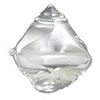


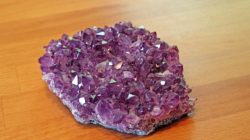
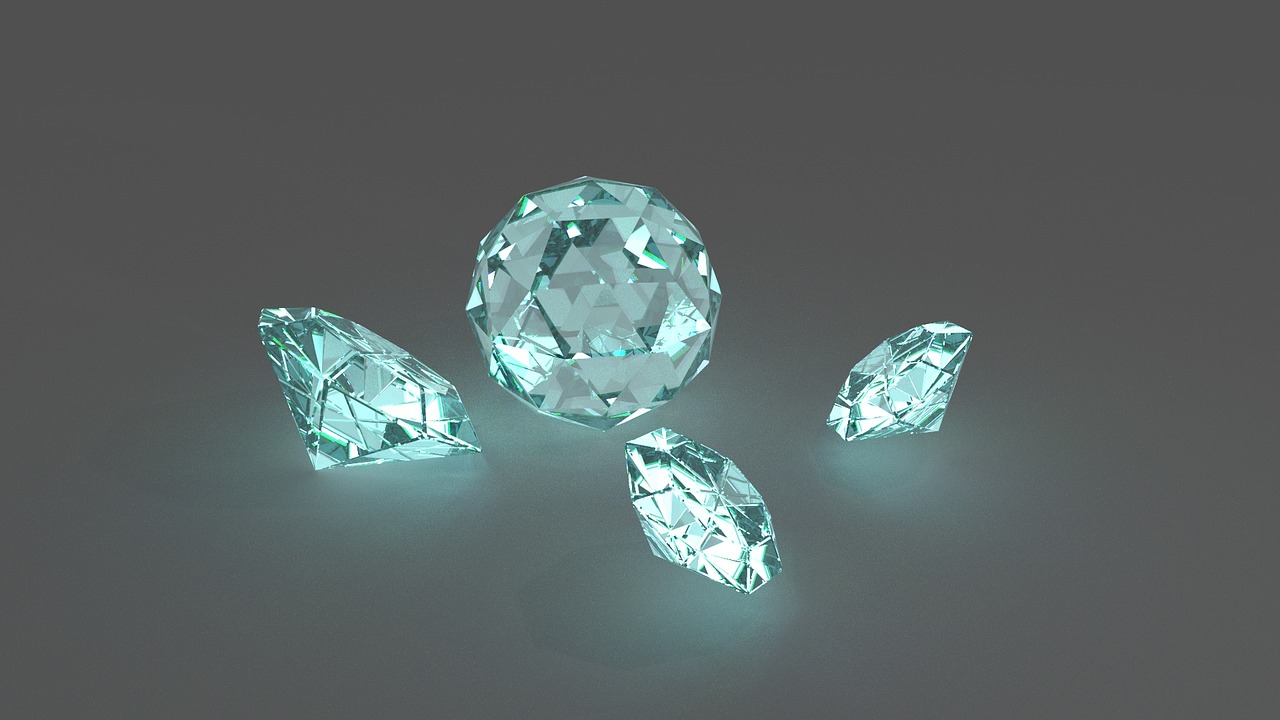

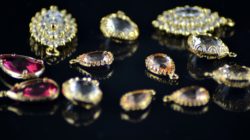
Beauty gems
For precious stones, one-photon is primarily characteristic (they can be both colorless and have a certain color). Gem may have both "His" and "someone else's" color, which it acquires due to impurities of other minerals, in some ways of its composition (for example, a semi-precious agate can be a yellowish shade due to the inclusion of hematite and iron hydroxisals ).
Also, an important role in the assessment of the gem plays its shine (the level of refractive rays, the ability of the stone to reflect them) and transparency. In addition, the beauty of gems give the optical effects that are obtained when combined with gloss, colors and transparency:
- Asterism - light rays are diverged from the middle of the gem in different directions. Such a property can be seen when the engines of other minerals (ruby, sapphire) are observed along the edge and edges of gems;
- Feline eye - it turns out due to the presence in the structure of pipe-like emptiness or fibers of other crystals, giving the gem of silk shine (nephritis, quartz, chrysoberill);
- Opalacementation is formed as a result of refraction of rays from the three-dimensional structure of the stone. This property is best pronounced at the opals, the colors of which are blown and sparkling;
- Irization - manifests itself in the form of rainbow color radiance during bright lighting, characterized for spat, quartz, lunar and solar stones;
- Dispersion - property can be seen from minerals with high refraction of light rays (diamond). In these gems during passage through the crystal, the waves of purple and red tones are blurred.
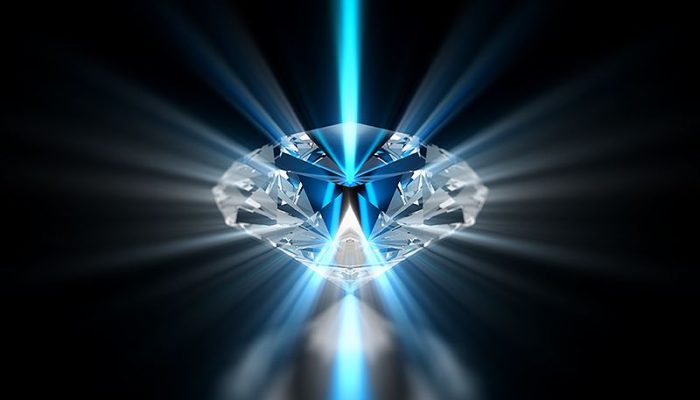
Wear resistance of gems
The smaller the strength has a stone, it is less valuable: when the gems is jewelry, it is very important that it can be cut without much concern, cut, cut, etc. Thus, in hardness, gems are divided into the following types:
- Soft (from 1 to 5) - Talc, limestone sword, marble, onyx;
- Average (from 5 to 6.5) - apatite, orthoclases;
- Solid (from 6.5 to 7.5) - quartz;
- High (more than 7.5) - topaz, sapphire, diamond.
The quality of precious and semi-precious stones is affected by their property, as viscosity - the ability to change and restore the form during the action on them deforming forces. Gems with high viscosity (jade) are easily retained, and you can wear them without fears that they will begin to crumble, like, for example, it can make such fragile semi-precious stones, as opal or obsidian.
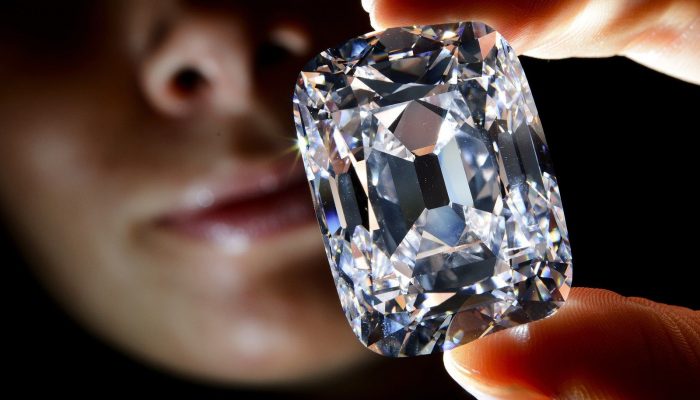
Also, the jewelers appreciate such a property of a stone as a spheel - its ability to break through the crystallographic plates (very necessary property for obtaining a flat surface). Meanwhile, if this characteristic is expressed too much, jewelers with gem prefer not to get involved: the stone can be covered with cracks and chips.
One of the characteristics of the strength of the gem is its purity or defectiveness - the absence of voids, cracks, impurities. It should be borne in mind that absolutely pure mineral almost never occurs and always contains traces of early stages of their development.
Cracks rarely when gem decorate and always reduce its strength - this also applies to expensive diamonds.
So, the most expensive gemstone "Kullyannan" (the name of the diamond was received in honor of the owner of the mine, where he was discovered) was donated to the King of Great Britain Edward VII at the beginning of the twentieth century: he had 3106 carats, the weight exceeded half a kilogram, and the dimensions were 100x65x50 mm. Since there were cracks in a presented diamond, it was impossible to make one major diamond from it, and therefore, before split it, the best branger of that time Joseph Asher studied him for several months.
It did not break it immediately: during the first attempt, the knife broke down. But the second approach was lucky, and Kullynan divided it into two parts (it is interesting that after the first accurate blow, the master of overvoltage lost consciousness). As a result, nine large diamonds were made of stone and ninety-six small gems, the largest of them inserted into the royal scepter, and the second largest decorates the Crown of the British Empire.
Chemical composition of gem
The appearance of most semi-precious and precious stones depends largely on the chemical composition of gems. Since they all have different chemical compositions and crystal structure (jewelry gems almost always have an ordered crystal grille), they are divided into relevant groups.

The most common element in gems is oxygen, and then in descending order, silicon, aluminum and calcium followed (most numerous group are silicates). By chemical composition, a list of semi-precious and precious stones is as follows:
- Silicates - chrysolite, grenade, beryl zircon, jade;
- Oxides - corundum, quartz, opals, spinel;
- Sulphides - pyrite, galvanit, sphalerite;
- Halides - fluorite;
- Native elements - diamond;
- Carbonates - Malachite, Marble Onyx;
- Organic compounds - amber, corals, pearls, gagat.
Interestingly, the chemical properties of the gems of the same group may vary with the unchanged crystal structure: the stones are capable of moving both to precious (ruby transforms into pink sapphire) and in semi-precious species.
Even the smallest oscillation in the properties can change the type of jewelry, for example, ruby \u200b\u200band sapphire, being varieties of Mineral Corunda and having the same characteristics, have different colors - Sapphire blue, ruby \u200b\u200bred.
As for gems with organic origin, before purchasing their current species, they were an element of wildlife: pearls grew up in oyster sink, amber is a resin, the coral - the skeleton of marine invertebrate animals, gagat - petrified tree.

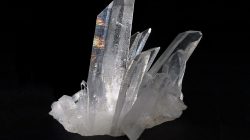
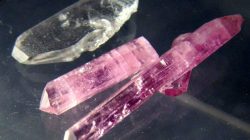


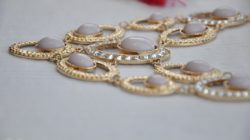
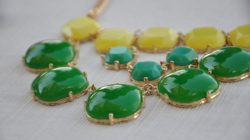
Origin
If it was previously believed that the most beautiful gem can only be formed in the tropics, geologists managed to prove the fallacy of this belief, finding a lot of gems in moderate latitudes. For example, in Russia such precious stones as aquamarins, diamonds, jade, topazy, lazurites were found in Japan, the coral, pearls, amethyst, in Ukraine - Beryl, Topaz, in Hungary - Opal.
Almost all the precious stones (of course, besides those that have organic origin) were formed in rocks, and therefore they are divided into metamorphic, igneous and sediment (among the latter - rhinestone, grenade, Colombian Emeralds). Some precious stones are considered primary (located in the place where they were formed), others - secondary formations (formed minerals were transferred by rivers, seas or winds to a new place).
The extraction of precious stones depends largely on the origin of gems. Precious and semi-precious stones located near ground surfaceThey often produce manually (especially for the third world countries): Stones are separated by ordinary hammers, chisels, chicks, sometimes use explosives from rock. Marst deposits in water are treated, washing sand or with a drag. But to get stones located at great depths (for example, diamonds), the technique still use - manually do not cope here.
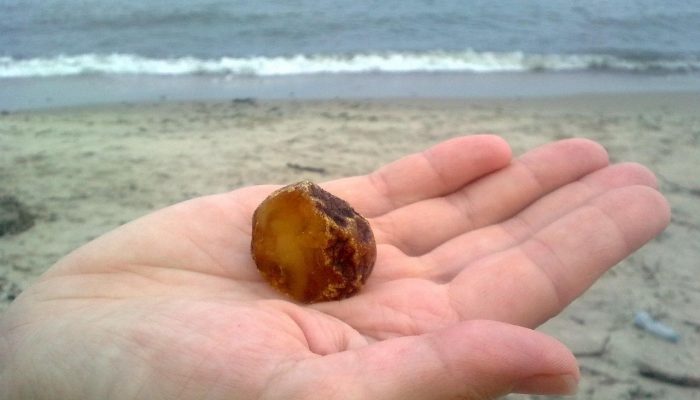
Synthetic stones
Another hundred years ago, a semi-precious or gem from their glass imitation or a diverse stone was pretty easy: the jewelry stone could be defined "on the eye" and it was not easy to deceive anyone. But, in the middle of the last century, science made a huge leap ahead - and the appearance of synthetic stones that were not inferior to natural precious stones, made gems available to the wide masses of the population.
It is worth noting that if earlier the creation of such stones because of the high cost of equipment was very expensive, then recently every year the cost of them falls.
The main difference between these stones from the original is that they were formed not inside rock, but were created by artificially in the factory or in the laboratory. Therefore, they have another name - "grown jewelry stones": It is often a complete imitation of the natural process of the formation of a gem (the only one, the stone grows significantly faster).
There are many positive moments in creating artificial stones. First of all, the jewelry has become more accessible to wide masses, therefore, increased sales and profits. Artificial gems are often more perfect than their natural analogues (they have no cracks, impurities, they are usually more rich and deep color). Do not forget that in some cases the creation of a synthetic stone is the only way to replace the disappearing natural gems by their artificial counterparts.
November 26th, 2014
Classification of stones
Have you thought, what is the classification of stones? Well, according to the science of mineralogy, the classification of precious stones begins with distinguishing various groups of precious stones based on their crystal structure and related chemical composition. Then the groups of precious stones are divided into separate species and, finally, varieties. The process seems simple enough, but in reality, most of the ordinary consumers do not know that groups, types and varieties are actually different levels of classification of stones. Science as such about the classification of precious stones was determined by the former graduates of GIA, Cornelius Herlbut and Robert Chalning, and what is noteworthy, their system is still used today with hemologists.
Types of precious stones
There are approximately 130 or more different types Gemstone for today. Chemical compounds can vary widely, from complex mixtures of various compounds to simple chemical elements, such as a diamond, which consists only of carbon. Although the diamond may have a simple composition, its crystal structure is quite complicated. Crystal structures can also vary from a simple single structure to extremely complex clusters of microscopic crystals. Some species can even have a non-crystalline structure, such stones as opal are called an amorphous structure. The classification of stones of inorganic nature occurs in the chemical composition, as well as the crystal structure of similarities, while organic types are classified for chemical composition. Examples of organic compounds include pearls, coral, amber and ivory.
Group of precious stones
When two or more types of precious stones have similar chemical composition, crystal structure or physical qualities, they are defined as a group. There are 16 groups of precious stones consisting of Beryl, Chrysoberill, Corundum, Diamond, Field Plove, Pomegranate, Jade, Lazurit, Opal, Peridot, Quartz, Spinel, Topaz, Tourmaline, Turquoise and Zircon. Interestingly, there are several special stones that are actually precious stones, such as tourmaline, zircon, topaz and spinel. However, each of these types has several variations, so there are justifying the status in the classification group.
Classification of stones by variety
The varieties of gems are divided and branched from different types of precious stones. An excellent example will be Corundum, which is a group. Blue Corundum is called sapphire and red corundum is ruby, both of which are a stone of one species. The varietal classification of stones is based on optical qualities, including color, optical phenomena, Color distribution and transparency.
At the moment there is a classification of precious stones, and they are broken into three groups. On this page you can read short description Natural stones and magical properties of these stones.
Choose the stone you are interested in.
and to see a complete description of all of its properties, click on the name.
First classification of stones
Gems
Diamond - Makes a person invincible, protects against witchcraft, reflects the negative energy back to its sender, helps keep the mind clear and focused and strengthens abstract thinking.
- Stone, mostly spiritual qualities of a person: the ability to reflect, insight, the ability to understand the motives of other people. Emerald nourishes love, kindness and calm.
- helps to overcome the strength of darkness, fight with fear. This is a stone of power, perfection, but also vanity. He brings happiness and love to his owner.
Sapphire - Since ancient times, various magical properties were attributed to this stone, such as the ability to protect and heal their owner, develop his talents and the best qualities.
Alexandrite - Mystics of the XIX century claimed that Alexandrite establishes harmony between the physical, astral and mental bodies of a person, making his owner more relaxed and compliant.
Second classification of stones
Semiprecious stones
Aquamarine — strengthens the spirit of man and exposes the deception. Such a stone is not recommended not recommended to wear dishonest people. Any attempt to fraud such a person will be exposed. Aquamarine allows you to reveal the secret secrets.
Almanandin -known as a stone material world. It helps to show realistic versions of the physical world. His energy helps to alleviate anxiety, panic and fear, and helps in maintaining calm and control themselves in various situations.
Amethyst — guards the owner from the temptation of theft, drunks and from irrelevant. It acts as an antidote, protects the owner from skin diseases, headaches, helps in the early healing of wounds and aggravates the mind.
Andalusite -metaphysically, this stone has powerful protective and creative energies. It helps the owners to look at problems from all sides to balance creativity with practicality.
— a good stone for work when you have to speak in public. It helps you use your personal bravery to find the right words, rhythm and intonation.
Heliodor -it is believed that warm shades of heliodore helps to gain an emotional balance and wisdom. This stone brings calm and pleasure to its owner.
Hyddenitis -pretty practical stone. He will not tolerate lazy people, dreamers, or stretch, he will simply ignore its owner, and for example, it may be lost. This mineral will only help selfless and hardworking people who go to their goal.
Rhinestone -since ancient times, people believed that the crystal gives his owner's ability to clasp. Medieval alchemists believed that this stone is like the skin of the planet, through which it receives signals from the space.
Garnet — it has the ability to clean the body. This stone contributes to family happiness, gives mutual love, performs cherished dreams, protects against accidents on the road.
Demantoid -traveler stone. They consider them powerful overalls, capable of driving evil spirits. Demantidoid is often used to remove depression and save people from evil dreams.
Quartz -It can be used for cleansing and clarifying on spiritual, mental and physical plans. Quartz increases spiritual growth, spirituality and wisdom.
Kangcite -brings good luck. He causes a person to see his life in a new way and removes all the tension from him. He also makes a person calm.
Morganite (Sparrow) — helps overcome fear, offense and anger. It also discloses protection mechanisms based on fear that complicates relationships, thereby creating resistance for healing and transformation.
Opal - This is a stone of deceptive hopes and illusions, passion, prejudice, favorite stone of magicians and alchemists. Opals activate intuition and contribute to inspiration.
Pill - Stimulates warmth and tenderness, combines creative personality forces. It is used to manage the crisis and maintains the desire to improve the quality of life.
Raratopaz -this mineral, if its energy and ability to pay for benefit, will make more active primitive instincts of its owner, so it becomes more viable, persistent, courageous, able to overcome any difficulties.
SPESSARTIN -this is a great stone for those who lack confidence. He helps the owner to recognize his strengths, and allows him to start his way of true life. Spessentine also stimulates the analytical part of the mind.
Tanzanit - It helps to solve questions related to the meaning of life, and to reconcile with himself.
— it is a stone of internal enlightenment; It is used as protection against insomnia and "evil eye". Topaz helps to reveal secrets. He protects against lies, brings women beauty and prudence to men.
Tourmaline -as the amulets of the tourmaline of all species help to preserve youth and strengthen their marriage. Tourmaline promotes safe childbirth and grant potency for men.
Chrysolit -this rocking, which keeps in the past is not quite productive. Peridot is favorable for personal relationships, as for strong friendly relations and marital bonds.
Cavorate -while dark red grenades focus on "will" and orange
Red grenades focus on "desire", yellow grenades are focused on personal growth.
Zircon -it is capable of bringing all energy resources into a sharp focus, giving it strength and confidence. It also helps him to reveal a lie and deception.
Spinel -physical I. medical propertiesThe spinel associated with the provision of physical energy and healing energy. It has a soothing action for all forms of inflammation, such as neuritis.
EUKLAZ - Bring you happiness and helps you see how much joy is in life. This stone will help you break out of old patterns of behavior that you continue to repeat if it is a problem for you.
Third classification of stones
Jewelry
Avenue -enhances mental abilities, perception and creative insight, a stone of gambling players.
Agat -increases creative potential and strengthens intelligence, which makes it a favorable stone for students and artists. , facilitates stress and loss pain. Reduces excitability.
Amazonite -disperses negative energy and increases self-confidence, helps to develop such qualities as leadership and communicativeness. This is a useful stone in case you have to face a difficult situation, there is a difficult question or it is necessary to speak publicly.
— believe this stone brings love and courage. Adjusts your owner against violence in affairs and thoughts. It is also good to reduce bodily and mental tension.
Heliotrope -it is considered a stone of courage. The bed (Heliotrop), because of his ability to increase success, is well suited to attract money. Keep the bed in your wallet for good luck, money and good health.
Hematite -this is a stone of magicians and spellcasters. It increases mental activity, balastives Yin / Yan energy and emotions, dissolves the negative.
Jadeitis (jade) -it was considered the predecessor of all precious stones, symbolizing five main virtues: mercy, modesty, courage, valor and wisdom.
— ancient Greeks made hemma from the carnelian with images of Amur and Psychai. Such gems were talismen of true love.
— it is believed that the feline eye protects and multiplies the wealth of its owner. For this purpose, it is recommended to keep it in the same place where money is hidden.
Labradorite -it stimulates reflections and self-analysis, bringing the clarity of intellectual thought and intuitive wisdom to dispel the illusion, determine the main cause of the problem, and bring peace. This is a building alert, helps to expel fears and uncertainty, strengthening faith and self-confidence.
Lazults -stone sincerity. It helps to change life for the better, promotes the development of new interests, strengthens the true friendship and brings happiness in love.
Moon rock -attracts love, hope and protection, contributes to unknown and helps to resolve disputes, causes prophetic dreams.
Malachite -attracts money and protection, guards the owner from danger.
Moldavit -this is a great stone for those who want significant changes in short intervals. It is believed that his magic spiritual nature has extraterrestrial roots.
Obsidian -it develops intuition, insight and ability to foresee future events. Obsidian protects against the "evil eye", witchcraft, curse and other magic, protects its owner on long trips, restores mental balance after unfortunate love, protects against infidelity.
Onyx -it is the "Stone of Fighters", as it allows you to focus on one purpose. Onyx makes a person more confident in himself, allows his owner to insist on his point of view, defend its interests with perseverance.
Opal -stone good luck, and additional mental abilities
— protects it from risky trade transactions and from the evil eye.
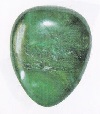 —
This stone allows the powerful healing energy to flow from the heart into the ground, removing any negative energy and filling the space for the ability to resume personal growth.
—
This stone allows the powerful healing energy to flow from the heart into the ground, removing any negative energy and filling the space for the ability to resume personal growth.
— it may awaken a fantasy in man. This is a stone of art stone players, hand dexterity, tricks, stone magicians, fakirov, as well as charlatans.
Serpentine (Snake — as a rule, serpentine is a protector. Accommodation serpentine in the corners of the house will be restore world And harmony in the family. Serpentine is also able to eliminate negative energy.
— helps us to look into the future to see the situation completely. Falconary eye-stone vision, insight and awareness.
— this is a stone of joy. He restores the sweetness of life and helps you appreciate and cherish yourself. He can raise a gloomy mood and helps you take steps to live your life as you want.
— attracts wealth and money, protects travelers, increases the clarity of thought.
— t. alisman growing power, which strengthens and strengthens our physical and spiritual existence. Uvarovit has many unique healing properties. Known as a stone to assist in strengthening peace and calm, brings love and devotion.
— soothes heartache and helps to get out of depression, contributes to emotional balance, wisdom and peace.
— it is able to remove the tension accumulated during the day. This has a soothing effect on the human mind. This is a stone charm. He harmonizes the marriage relationship.
— This is a stone of happiness. If we are in a pendant or bracelet, it will save from evil spirits and the evil eye. Jasper gives the courage and self-confidence necessary to achieve victory.
- Frozen, petrified pine resin. This mineral increases the magical forces of spells, it is also able to attract love and increase popularity
Naturally, on this page of the site - the classification of stones are listed not all the gems. The question arises - how much is precious stones? Somewhere in the network, the data was found that at the moment there are about four thousand varieties of precious stones, and this is not the limit, each year is added every other pieces. So this classification of stones is incomplete. To learn about the properties of the stone you like, select it in the catalog (right side of the site there is a list of stones), and you will learn a lot of new and interesting. If you already have a stone, then you should know that precious stones are energy accumulators, they collect energy and share it with their owner. And what energy is positive or negative this energy depends only on you and your environment. But there are methods for cleaning and charging your favorites.
